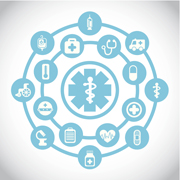Better Health IT Interoperability Needed to Close Gaps in Care
A recent WEDI whitepaper spells out action steps providers can take to improve health IT interoperability to increase gaps in care programs.

- Health IT interoperability serves as a considerable barrier to mitigating gaps in care, according to a recent white paper published by the Workgroup for Electronic Data Interchange (WEDI) in partnership with the Louis W. Sullivan Institute for Healthcare Innovation.

Defined as “the discrepancy between evidence-based recommendations or best practices and the care that is actually delivered,” gaps in care pose threats to the healthcare industry at large because they potentially bar certain patient populations from receiving the care that they need in the timeframe that they need it.
To close these gaps in care, providers rely on interoperable health data that helps coordinate care and gives physicians the information they need to deliver treatments at the right time.
However, according to WEDI, this interoperability is not being achieved. While healthcare organizations work to implement gaps in care programs using health IT, they are encountering difficulty because health data cannot always be transferred between disparate systems.
“The more fragmented and incomplete the patient medical record, the more difficult it becomes to identify gaps in care or document their closure effectively,” WEDI explained in the white paper.
Specifically, lack of interoperability creates issues with care coordination between various providers. Lack of data standards limit data interoperability, timeliness in the delivery of certain data to different providers, the accuracy of that data, and the ability for other providers to use that data.
“Common technical barriers include the limited ability to accurately correlate data aggregated from multiple data sources, a lack of standardized integration capabilities and interoperability standards and significant variation in the timeliness, actionability, accuracy and reliability of data,” the group said.
Although WEDI made clear that health IT interoperability was a notable hindrance to closing gaps in care, the organization still maintained that technology holds potential for completely transforming care delivery.
Health IT grants physicians access to data that otherwise would not have been attainable in a timely fashion, and does help advance their ability to coordinate some care, although those abilities are presently limited.
“Health IT can support activities such as tracking care processes and disease management activities, analyzing provider orders and test results, coordinating transitions of care, communicating with care team members, or updating patient health records with new medical encounters, reported allergies, test results and prescribed medications,” WEDI said.
The key to closing gaps in care, therefore, is developing health IT systems that support the seamless, interoperable transfer of health data. By robustly bolstering interoperability, providers can reap all of the benefits of health IT without the difficulties that arise from lack of interoperability.
“Many health plans and providers leverage sophisticated health information technology (health IT) solutions, streamlining and automating the electronic documentation, exchange and analysis of data,” WEDI noted. “By rapidly extracting and integrating actionable patient health information from disparate settings, health IT can provide a more composite, nuanced understanding of patient health and care.”
To better support interoperability to close gaps in care, WEDI provided three suggestions:
- Develop a standard data dictionary for gaps in care.
- Identify best practices for patients to leverage their own data and use technology to close gaps in care.
- Develop and align alternative payment models to support data measurement.
Overall, these goals will help standardized health data and the way in which providers send and receive it. In doing so, providers can better identify gaps in care and work to mitigate them going forward.
“As documentation becomes less disjointed and the exchange of data less labor-intensive, technology solutions will be leveraged to streamline care processes and automate end-to-end workflows,” WEDI concluded. “Greater automation will also yield more robust predictive analytic capabilities that can in turn produce more targeted intelligence for providers, health plans and patients.”
“This evolution in capability provides the necessary foundation to identify, prevent, manage and close gaps in care.”
